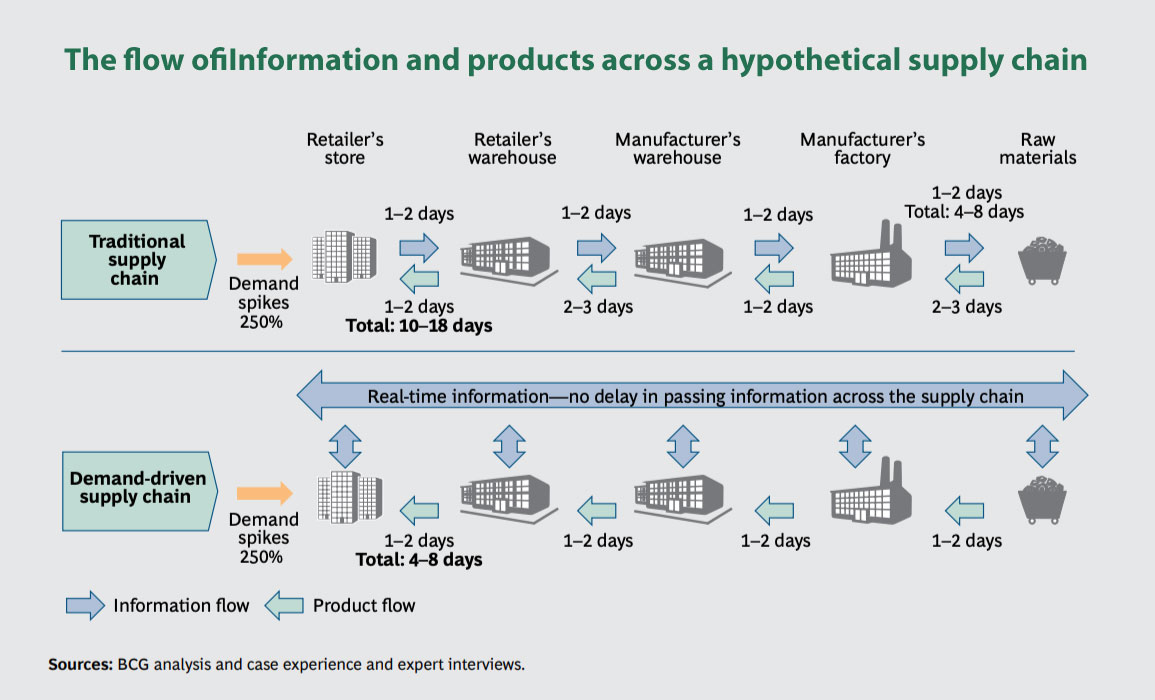The outbreak of the COVID-19 pandemic spread worldwide and forced businesses to shut down. Due to the global red alert, governments imposed lockdown to ensure social distancing, which left production and supply chains severely battered.
Nearly 22 million businesses were affected in China alone. Since most global companies had their manufacturing units in China, this shutdown affected a minimum of 56,000 companies across the globe.
The global coronavirus outbreak disrupted nearly all the major industries: food, automobiles, technology, fashion and entertainment, and more. Particularly, companies with cross-border procurement and supply chains had to face the brunt of supply chain cutoff. For example, Fiat Automobiles had to suspend its production at a car factory in Serbia due to the unavailability of spare parts from China.
Similarly, Hyundai decided to stop production at its automobile plants in South Korea because the supply of spare parts dried up from China. Also, Procter & Gamble’s supply chain was in jeopardy as it had 387 suppliers in China that used to supply 9,000 materials to various companies in the world.
A report by BCA Research, global growth was estimated to dip to 0 percent in Q1 of 2020 because commodity markets were going through a huge consumer demand slowdown.
To mitigate supply chain risks, it is critical to develop a structured Supply Chain Risk Management (SCRM) strategy to reduce supply vulnerability and ensure business continuity.
The Demand Driven Approach for Risk Management
Supply chains in this era face increasing volatility and uncertainty because of inflated product portfolios, relatively shorter product life cycles, volatile customer demand, and network complexity. Many supply chain initiatives by organizations still primarily focus on cost reduction and efficiency rather than ensuring continuity of supply during adverse times. Now, the question is “How to control risk management” efficiently? A good answer is incorporating the Demand Driven Material Requirements planning or DDMRP methodology coupled with the tactical Demand Driven Sales & Operation Planning (DDS&OP) and the strategic Adaptive Sales & Operation Planning (AS&OP)
DDMRP is a pull-based and powerful replenishment approach that can enable an organization to take on supply chain challenges or risks through significant flexibility and stock reduction improvements. There are many proven DDMRP success stories, which encourage manufacturing companies of diverse industries to begin implementing DDMRP.
In recent years, DDMRP is getting significant traction in the realm of supply chain management. The method builds on the fundamentals of the supply chain and the science of flow, to increase agility and fulfill customer demand while reducing total supply chain cost and working capital.

DDMRP has proven to be a great tool in times of crisis and disruptions because it provides unprecedented visibility and equips the management team with the capability to allocate scarce materials or capacity in order to achieve the best possible customer service.
For instance, Shell Lubricants were able to manage through severe setbacks in their supply chain when a fire broke out in one of their warehouses in France, or when a neighboring chemical plant exploded in Tarragona Spain. They were able to maintain customer service and their customers consistently reported high levels of satisfaction.
In another example, 9Wood, a MTO manufacturer of wood ceilings, was able to fulfill all their Fast Track customer orders on times despite experiencing the biggest snowstorm in the last 50 years that forced them to shut down their shop for a day and work with half the staff for several more. All this while their customer lead times had already been cut down to 3 weeks from originally 8-10 weeks.
The AS&OP is the process where the portfolio strategy, the go-to market strategy, the financial strategy, the operations strategy and the risk management strategy are combined in a series of plans which are communicated to the DDS&OP team.
The DDS&OP team reconciles these plans with the operating model capabilities, run what-if scenarios and feedback to the AS&OP with a series of recommendations on how the operating model must be adapted in order to support the plans. When it comes to risk management it is key to select a robust solution that will work well under different scenarios rather than the best solution under a very specific scenario.
This entire process is bi-directional: operational capabilities must be adapted to reflect the strategic direction of the organization, while the business strategy must consider the operational capabilities and constraints.
Is the DDMRP Inventory Buffer the Solution for Process Manufacturing Industries?
DDMRP uses buffers at carefully selected decoupling points to drive order generation throughout the supply chain. Buffers act as shock absorbers to ease pressure on the supply chain that occurs due to demand and supply variability. They also decouple different areas of the plant, thus reducing the need for tight synchronization of resources.
Each buffer in DDMRP comprises a safety zone (red zone), lead-time zone (yellow zone), and minimal reorder quantity (green zone). A DDMRP-driven strategy is about generating supply orders by assessing actual inventories, stock ordered but not received, and qualified sales order demand. Whenever the inventory level goes below the reorder level (the top of the yellow zone) a supply order is generated.
Particularly, process-manufacturing industries have complex production planning processes with interdependencies between batch processes and discrete processes that often need to be synchronized tightly. Sometimes specific schedule sequences must be followed to avoid loss of productivity, or reduce process risks. Thorough scheduling with sequence dependencies is therefore crucial.
An ideal example is the production of food products. Recipes containing higher levels of allergens will be produced at the end of a production sequence before a major equipment cleaning. Thus, the visual priorities provided by DDMRP to ensure availability must be combined with allergenic priorities to generate the overall optimal production sequence. DDMRP in combination with techniques such as planning wheels provides a powerful approach to the problem of scheduling in process manufacturing industries.
Closing Words
The bottom line is that the demand-driven approach for risk management allows to address risks at the operational, tactical and strategic level and results in a supply chain that is more resilient to sudden disruptions. In addition, it helps in accelerating the shift towards a demand-centric operation, which will eventually streamline working capital management through efficient production planning and inventory management.
Learn how a demand-driven supply chain risk management can help you re-align and integrate your supply chain, and transform it to be agile and flexible. Make sure to join our upcoming webinar for more useful information.
Do you wish to learn and detect the underlying risk in your supply chain? Be it financial risk, scheduling risk or human behavioral risk, early detection of these risks and designing an action plan can mitigate them. Learn more by joining our upcoming webinar.








